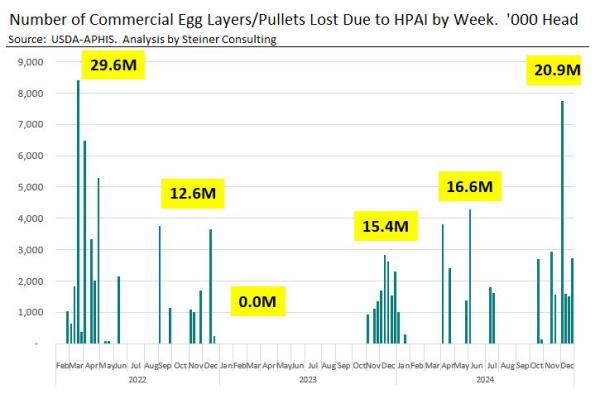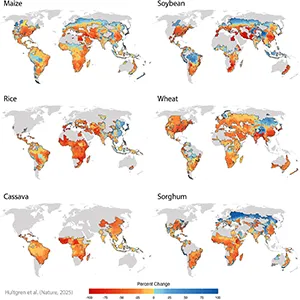‘Great concern.’ Alabama food bank worries SNAP cuts could deepen food insecurity – Alabama Daily News

Report on Food Security Challenges in Alabama and Implications for Sustainable Development Goals
Introduction: Legislative Changes Impacting Food Assistance
Recent federal legislation introducing spending cuts and tax adjustments presents significant challenges to food security in Alabama, directly impacting progress toward key Sustainable Development Goals (SDGs), particularly SDG 1 (No Poverty) and SDG 2 (Zero Hunger). With one in seven state residents dependent on the Supplemental Nutrition Assistance Program (SNAP), forthcoming changes are projected to increase food insecurity and place additional strain on charitable food systems.
Direct Impact on SDG 2: Zero Hunger
The anticipated reduction in SNAP benefits is expected to drive a substantial increase in demand for food bank services. This development threatens to widen the existing food gap and hinder efforts to achieve Zero Hunger in the region.
Current State of Food Insecurity
- The Community Food Bank of Central Alabama, serving 12 counties, reports that food insecurity has risen annually since the pandemic.
- In the last year, the food bank distributed approximately 21 million meals.
- A significant “meal gap” of 46.8 million meals persists in the service area, indicating that current charitable efforts meet less than half of the existing need.
- According to the Center on Budget and Policy Priorities, an estimated 61,000 Alabamians are at risk of losing some or all of their SNAP benefits.
Policy Adjustments and Repercussions for Vulnerable Populations
The legislation introduces stricter eligibility criteria that disproportionately affect vulnerable groups, undermining SDG 10 (Reduced Inequalities) and SDG 3 (Good Health and Well-being).
Expanded Work Requirements
New regulations expand the work requirements for able-bodied adults without dependents. This policy change has implications for SDG 8 (Decent Work and Economic Growth) by altering the conditions for social support.
- The applicable age for work requirements is extended from 18-54 to 18-64.
- The requirements will now also apply to new demographic groups, including:
- Parents of children aged 14 and older
- Veterans
- Young adults aging out of the foster care system
Impact on Seniors and Families
There is significant concern for senior citizens on fixed incomes who may lose benefits, exacerbating poverty and health challenges in their later years. The inability of grandparents to afford food for themselves and their grandchildren highlights the strain on family structures and intergenerational well-being.
Operational and Financial Strains on Support Systems
The policy changes create a dual challenge for the state’s food support network, impacting both the supply chain for food banks and the financial stability of state-administered programs. This tests the resilience of partnerships and institutions crucial for achieving the SDGs, as outlined in SDG 17 (Partnerships for the Goals) and SDG 16 (Peace, Justice and Strong Institutions).
Challenges for Food Banks and Local Agriculture
- The U.S. Department of Agriculture has cut the Local Food Purchase Assistance Cooperative Agreement Program, which previously supplied food banks with locally grown produce.
- This cut represents a “lose-lose” situation, as it simultaneously reduces the food supply for insecure populations and eliminates a key market for local farmers, creating a setback for SDG 12 (Responsible Consumption and Production).
State-Level Financial Burdens
- A new cost-share plan, set to begin in fiscal year 2028, will require states to co-fund SNAP benefits based on their payment error rate.
- With a current payment error rate of 8.32%, Alabama would become responsible for 10% of its benefit costs, estimated at $177 million.
- When combined with increased administrative costs mandated by the bill, Alabama’s total financial liability could reach approximately $265 million.
Perspectives and Ongoing Commitments
Government Rationale
Proponents of the legislation, including U.S. Senator Katie Britt, assert that the changes are designed to eliminate waste, fraud, and abuse within social safety net programs. The stated goal is to ensure the long-term sustainability of SNAP for the most vulnerable beneficiaries.
Community Response and Mission
Despite the impending challenges, food banks remain committed to their core mission. Nicole Williams, CEO of the Community Food Bank of Central Alabama, affirmed that the organization will continue its work to feed neighbors in need. This highlights the critical role of community-based organizations in filling gaps left by policy shifts and striving to uphold the principles of the Sustainable Development Goals at a local level.
Analysis of Sustainable Development Goals in the Article
Which SDGs are addressed or connected to the issues highlighted in the article?
-
SDG 1: No Poverty
- The article discusses the Supplemental Nutrition Assistance Program (SNAP), a key social safety net program designed to assist low-income individuals and families. Changes to SNAP benefits directly impact the financial stability and poverty levels of recipients, as highlighted by the statement that “One in seven Alabamians rely on the Supplemental Nutrition Assistance Program.”
-
SDG 2: Zero Hunger
- This is the central theme of the article. It focuses on food insecurity in Alabama, the role of food banks like the Community Food Bank of Central Alabama, and the potential for increased hunger due to cuts in SNAP benefits. The article quantifies the problem by mentioning the “meal gap… sits at 46.8 million meals” and that “food insecurity has already risen every year since the pandemic.”
-
SDG 10: Reduced Inequalities
- The article points out that the changes to SNAP disproportionately affect vulnerable and specific population groups. It mentions expanded work requirements for “able-bodied adults without dependents to age 64,” “parents of children 14 and up, veterans and young adults aging out of the foster care system,” and “seniors… on a fixed income.” This highlights how policy changes can increase inequality by impacting certain demographics more than others.
What specific targets under those SDGs can be identified based on the article’s content?
-
Target 1.3: Implement nationally appropriate social protection systems and measures for all, including floors, and by 2030 achieve substantial coverage of the poor and the vulnerable.
- The article’s entire discussion revolves around SNAP, which is a “nationally appropriate social protection system.” The potential loss of benefits for “61,000 Alabamians” and the debate over the program’s funding and requirements directly relate to the implementation and coverage of this social protection system for the poor and vulnerable.
-
Target 2.1: By 2030, end hunger and ensure access by all people, in particular the poor and people in vulnerable situations, including infants, to safe, nutritious and sufficient food all year round.
- This target is directly addressed through the discussion of rising food insecurity and the efforts of food banks to bridge the “meal gap.” The CEO of the Community Food Bank of Central Alabama explicitly states their mission is to “make sure we have nutritious food” for those in need, which aligns perfectly with this target.
-
Target 2.3: By 2030, double the agricultural productivity and incomes of small-scale food producers, in particular women, indigenous peoples, family farmers, pastoralists and fishers, including through secure and equal access to land, other productive resources and inputs, knowledge, financial services, markets and opportunities for value addition and non-farm employment.
- This target is relevant due to the mention of the U.S. Department of Agriculture cutting the “Local Food Purchase Assistance Cooperative Agreement Program.” The article notes this cut “impacted farmers who supplied the food for the program,” indicating a direct link between food assistance policies and the income of local, likely small-scale, producers.
-
Target 10.4: Adopt policies, especially fiscal, wage and social protection policies, and progressively achieve greater equality.
- The article analyzes a specific policy change—the bill altering SNAP work requirements and funding. The discussion about how these changes affect seniors, veterans, and low-income families is a direct examination of how a social protection policy impacts equality.
Are there any indicators mentioned or implied in the article that can be used to measure progress towards the identified targets?
-
Indicator 1.3.1: Proportion of population covered by social protection floors/systems, by sex, distinguishing children, unemployed persons, older persons, persons with disabilities, pregnant women, newborns, work-injury victims and the poor and the vulnerable.
- The article provides data points for this indicator, stating that “One in seven Alabamians rely on the Supplemental Nutrition Assistance Program” and that “About 61,000 Alabamians could lose at least some SNAP benefits.” These figures directly measure the proportion of the population covered by this specific social protection system.
-
Indicator 2.1.2: Prevalence of moderate or severe food insecurity in the population, based on the Food Insecurity Experience Scale (FIES).
- The article provides several metrics that act as proxies for this indicator. The statement that “food insecurity has already risen every year since the pandemic” points to the prevalence of food insecurity. More specifically, the “area’s meal gap, which measures the number of meals food-insecure households are missing, sits at 46.8 million meals,” serving as a direct measure of the severity of food insecurity in the region.
-
Indicator 2.3.2: Average income of small-scale food producers, by sex and indigenous status.
- While not providing a specific monetary value, the article implies a negative impact on this indicator. The cut to the Local Food Purchase Assistance Cooperative Agreement Program was described as a “lose-lose” situation that “impacted farmers who supplied the food,” suggesting a reduction in their income or market access.
Summary of Findings
| SDGs | Targets | Indicators |
|---|---|---|
| SDG 1: No Poverty | 1.3: Implement nationally appropriate social protection systems and measures for all… and achieve substantial coverage of the poor and the vulnerable. | 1.3.1: The proportion of the population covered by SNAP (“One in seven Alabamians”) and the number at risk of losing coverage (“61,000 Alabamians”). |
| SDG 2: Zero Hunger | 2.1: End hunger and ensure access by all people… to safe, nutritious and sufficient food all year round. | 2.1.2: The “meal gap” of 46.8 million meals, which measures the prevalence and severity of food insecurity. The fact that food insecurity has “risen every year since the pandemic.” |
| SDG 2: Zero Hunger | 2.3: Double the agricultural productivity and incomes of small-scale food producers… | 2.3.2: The negative impact on farmers’ income due to the cut of the Local Food Purchase Assistance Cooperative Agreement Program. |
| SDG 10: Reduced Inequalities | 10.4: Adopt policies, especially fiscal, wage and social protection policies, and progressively achieve greater equality. | The specific vulnerable groups affected by the policy change: seniors, veterans, young adults aging out of foster care, and adults aged 55-64. |
Source: aldailynews.com

What is Your Reaction?
 Like
0
Like
0
 Dislike
0
Dislike
0
 Love
0
Love
0
 Funny
0
Funny
0
 Angry
0
Angry
0
 Sad
0
Sad
0
 Wow
0
Wow
0






































































:quality(70):focal(289x270:299x280)/cloudfront-us-east-1.images.arcpublishing.com/shawmedia/H7NH74ZRH5CNJBTEBSN7OYFHL4.jpg?#)






